
Darlinghurst is an inner-city suburb in the eastern suburbs of Sydney, New South Wales, Australia. Darlinghurst is located immediately east of the Sydney central business district (CBD) and Hyde Park, within the local government area of the City of Sydney. It is often colloquially referred to as "Darlo".

Kings Cross is an inner-eastern locality of Sydney, New South Wales, Australia. It is located approximately 2 kilometres east of the Sydney central business district, in the local government area of the City of Sydney. It is bounded by the suburbs of Potts Point, Elizabeth Bay, Rushcutters Bay and Darlinghurst.

SCEGGS Darlinghurst is an independent Anglican single-sex primary and secondary day and boarding school for girls, located in Darlinghurst, an inner-city, eastern suburb of Sydney, New South Wales, Australia.
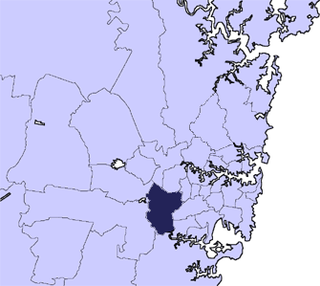
The City of Bankstown was a local government area in the south-west region of Sydney, Australia, centred on the suburb of Bankstown, from 1895 to 2016. The last mayor of the City of Bankstown Council was Clr Khal Asfour, a member of the Labor Party.

Ronald Grant Taylor was an English-Australian actor best known as the abrasive General Henderson in the Gerry Anderson science fiction series UFO and for his lead role in Forty Thousand Horsemen (1940).

William Street is a 1.4-kilometre-long (0.87 mi) major thoroughfare in Sydney, New South Wales, Australia. The street was named in honour of king William IV of the United Kingdom of Great Britain and Ireland upon its opening in 1834.
Australian non-residential architectural styles are a set of Australian architectural styles that apply to buildings used for purposes other than residence and have been around only since the first colonial government buildings of early European settlement of Australia in 1788.

Coolamon Shire is a local government area in the Riverina region of south-western New South Wales, Australia. The Shire comprises 2,433 square kilometres (939 sq mi) and is located adjacent to the Newell Highway and the Burley Griffin Way. The Shire includes the towns of Coolamon, Ganmain, and Ardlethan, and the villages of Matong, Marrar, and Beckom.
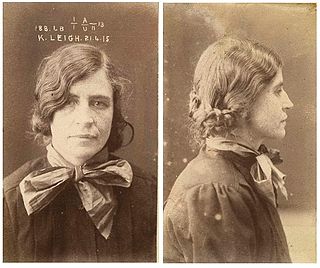
Kathleen Mary Josephine Leigh was an Australian underworld figure who rose to prominence as a madam, illegal trader of alcohol and cocaine, and for running betting/gambling syndicates from her home in Surry Hills, Sydney, Australia during the first half of the twentieth century. Leigh, known as the ‘Queen of Surry Hills’, was a sly groger and fence for stolen property.
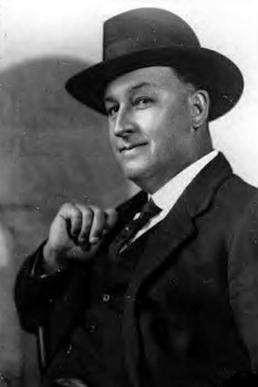
Raymond Longford was a prolific Australian film director, writer, producer, and actor during the silent era. Longford was a major director of the silent film era of the Australian cinema. He formed a production team with Lottie Lyell. His contributions to Australian cinema with his ongoing collaborations with Lyell, including The Sentimental Bloke (1919) and The Blue Mountains Mystery (1921), prompted the Australian Film Institute's AFI Raymond Longford Award, inaugurated in 1968, to be named in his honour.

Sir Thomas Hughes KCSG, JP was an Australian businessman and New South Wales state politician who was Lord Mayor of Sydney, a member of the New South Wales Legislative Council and served as Chairman of Washington H. Soul Pattinson from 1906 to 1929.
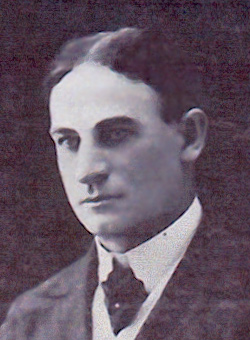
Albert Edward Bailey, better known as Bert Bailey, was a New Zealand-born Australian playwright, theatrical manager and stage and screen actor best known for playing Dad Rudd, in both mediums, the character from the books penned by Steele Rudd.

Edmund Duggan was an Irish-born actor and playwright who worked in Australia. He is best known for writing a number of plays with Bert Bailey including The Squatter's Daughter (1907) and On Our Selection (1912). His solo career was less successful than Bailey's. His sister Eugenie was known as "The Queen of Melodrama" and married noted theatre producer William Anderson, for whom Duggan frequently worked as an actor, writer and stage manager.

Alfred Rolfe, real name Alfred Roker, was an Australian stage and film director and actor, best known for being the son-in-law of the celebrated actor-manager Alfred Dampier, with whom he appeared frequently on stage, and for his prolific output as a director during Australia's silent era, including Captain Midnight, the Bush King (1911), Captain Starlight, or Gentleman of the Road (1911) and The Hero of the Dardanelles (1915). Only one of his films as director survives today.

Henry Albert ('Bert') Forsyth, known professionally as H. A. Forsyth, was a pioneer of Australian film production during the silent era. From about 1907 to 1909 Forsyth worked as a travelling picture showman, screening the film Robbery Under Arms in Australian country towns. In 1910 his company, Southern Cross Motion Pictures, produced and released two successful motion pictures, Thunderbolt and Moonlite, based on incidents in the careers of the bushrangers Frederick Ward and Andrew Scott. For these projects Forsyth worked with Jack Gavin, who directed both films and acted in the lead roles. In January 1913 the New South Wales Government banned Forsyth's bushranger films. At various stages in his career Bert Forsyth also managed theatres that screened motion pictures.
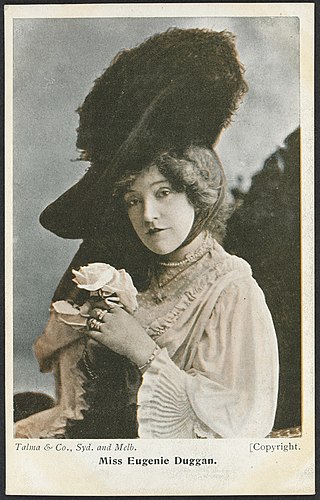
Eugenie Marian Duggan was a popular Australian stage actress. She was the sister of the actors Edmund, P.J. and Kathleen Duggan. She began studying acting, won a number of elocution competitions and made her professional debut in 1890 in Romeo and Juliet.
The Bookstall series was a series of Australian books published by the NSW Bookstall Company from 1904 onwards.
Peter MacGregor Pagan was an Australian-American actor from Sydney best known for his role in The Overlanders (1946).

Olga Agnew was an Australian child actress, who starred in multiple plays and one movie from 1912 to 1920.
Caroline Tennant-Kelly (1899–1989) was an Australian theatre producer, Aboriginal rights activist and anthropologist.



















